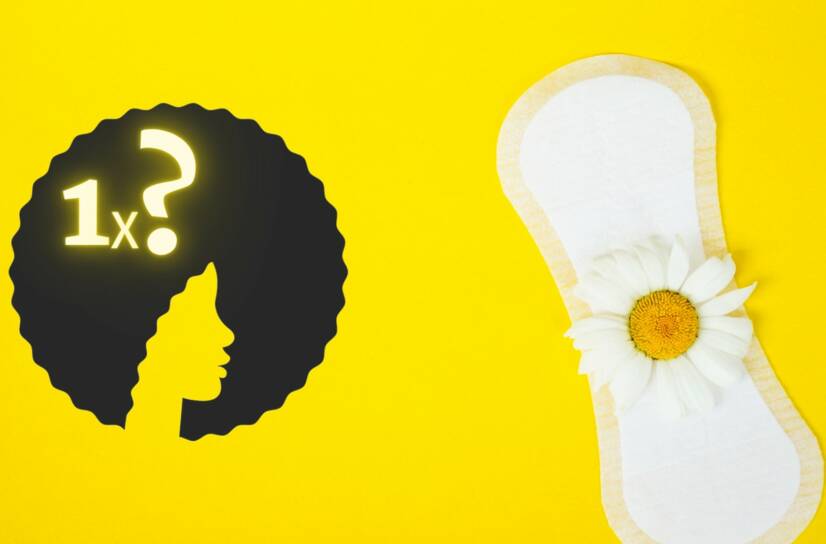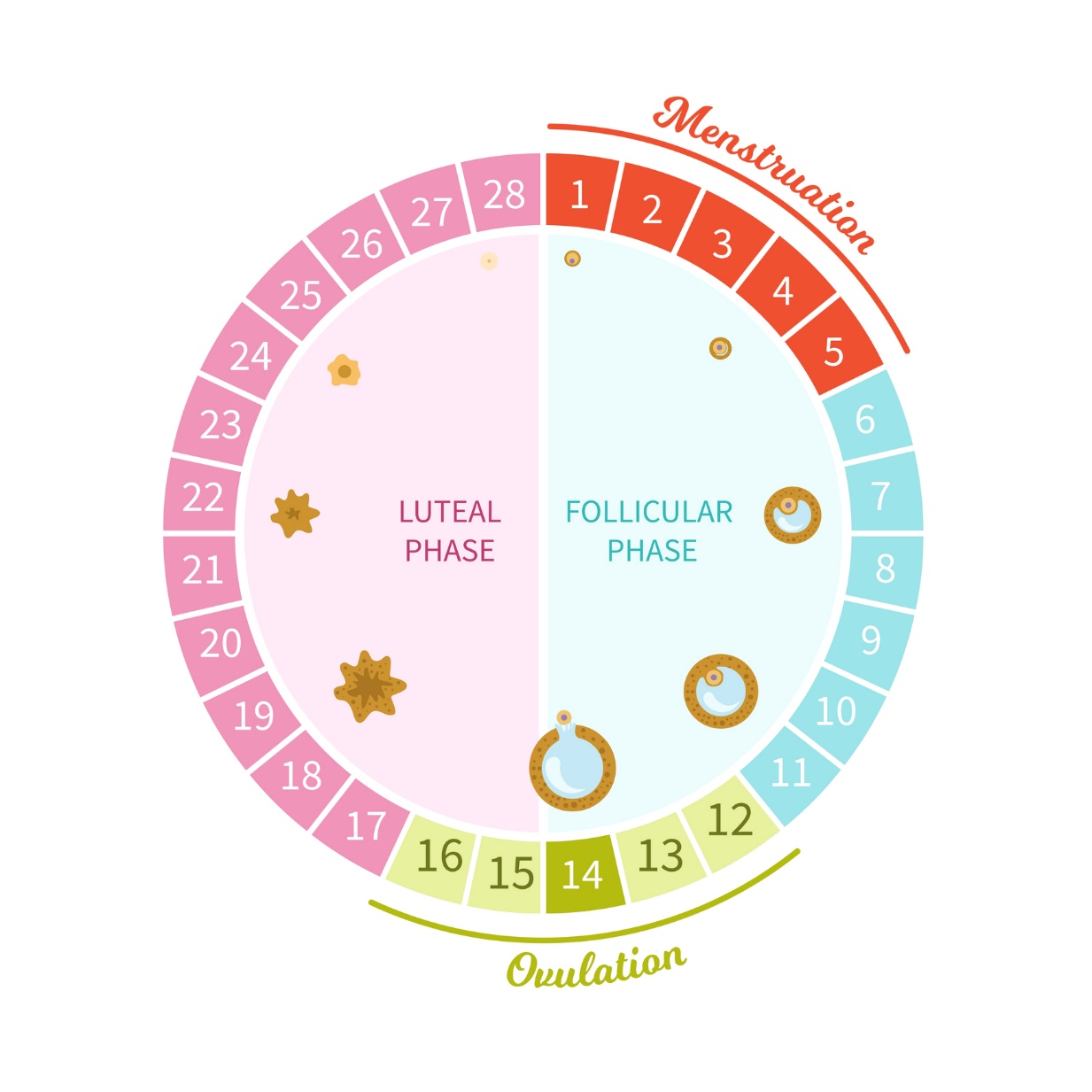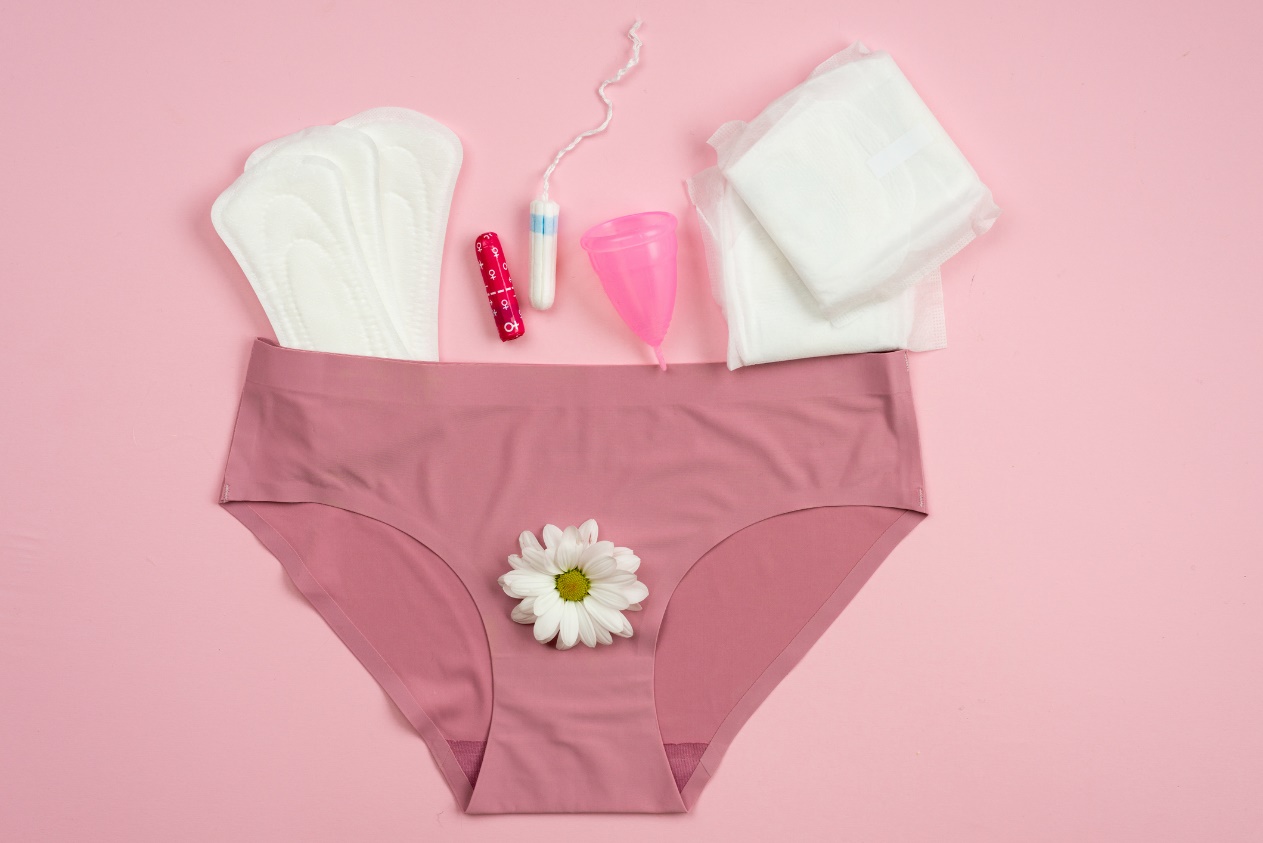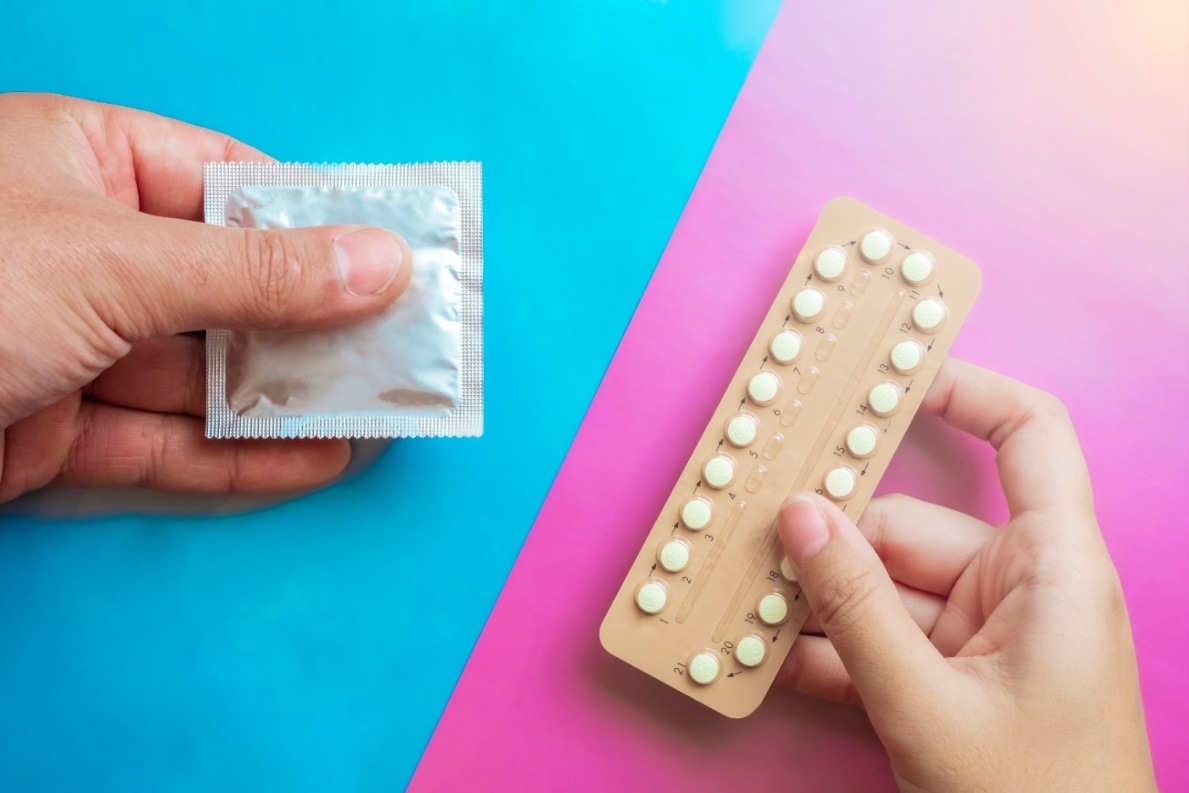- ROZTOČIL, Aleš and Pavel BARTOŠ. Modern Gynaecology. Prague: Grada, 2011. ISBN 978-80-247-2832-2
- mojamenstruacia.sk- What is natural, normal and healthy menstruation?
- nature.com - Menstrual cycle rhythmicity: metabolic patterns in healthy women
- ncbi.nlm.nih.gov- Physiology, Menstrual Cycle. by Dhanalakshmi K. Thiyagarajan; Hajira Basit; Rebecca Jeanmonod
First menstruation: what basic information should we know? Child/girl, woman, mother and their joint preparation

The first menstruation brings with it responsibilities and certain questions that girls and women should know the answers to. Get to know the most important information about this important moment for every young girl (and even baby).
Article content
- Overview of the female genital organs
- What is menstruation?
- The menstrual cycle and its phases
- When does the first menstruation occur? / When does menarche occur?
- How long does menstruation last in a woman?
- Menstrual aids
- Intimate hygiene
- Menstruation carries with it the responsibility
- Prevention and protection
Menstruation is the periodic physiological bleeding from the female genital organs. From menarche (first menstruation) onwards, bleeding cycles approximately every 28 days. How does the menstrual cycle work and what is it for?
Menstruation = menstruation.
Menarche = first menstruation.
Overview of the female genital organs
The female reproductive organs are divided into external and internal organs, which are located in the small pelvic area. Internal organs include the ovaries, fallopian tubes, and the uterus, which comes out through the vaginal tube. External organs include the front of the vagina, the labia minora and labia majora, and the clitoris.
The female reproductive organs ensure the production of eggs and create a suitable environment for fertilization and development of a new human being.

What is menstruation?
The menstrual cycle primarily allows a woman to become pregnant.
During the menstrual cycle, an egg (female sex cell) matures in the ovaries and is then transported through the fallopian tube to the uterus.
If the egg is not fertilised by a sperm (male sex cell) during its journey to the uterus, it is expelled from the body, together with the detached part of the uterine lining, in the form of menstrual blood.
Menstruation is a short phase of the menstrual cycle. It occurs after the egg (female sex cell) has not been fertilized.
During menstrual days, the body gets rid of excess parts of the uterine lining in the form of blood. From the uterus, the blood passes through the narrow opening of the cervix into the vaginal tube and then leaves the body out through the vagina.
During and after menstruation, the detached uterine lining begins to rebuild and again prepare the environment for another potential pregnancy.
The menstrual cycle and its phases
A woman's menstrual cycle serves to prepare for potential pregnancy and reproduction. The length of the cycle is calculated at 28 days. It begins on the first day of menstruation and ends on the first day of the next menstrual period.
During the cycle, the levels of sex hormones (estrogen, progesterone) change, thus altering the course and different phases of the cycle. During the cycle, various physical and psychological manifestations of a woman are present due to the changes in hormones.
The physiological cycle length is set at 24-35 days.
During the first years of menstruation and in adolescence, the length and regularity of the cycle tend to change and adjust.
Also, the intensity of bleeding levels off and the symptoms of PMS (premenstrual syndrome) are alleviated.
The different parts of the menstrual cycle are divided into 4 basic phases:
- Menstrual phase
- The follicular phase
- Ovulatory phase
- Luteal (luteinizing) phase
1. Menstrual phase (days 1-5 of the cycle)
This phase usually lasts 3 to 7 days. The intensity of bleeding is individual. During these days, the woman's body flushes out the unfertilized egg and excess uterine lining in the form of blood.
During menstruation, a woman physiologically loses about 50 to 80 milliliters of blood.
The typical manifestation is mild pain in the lower abdomen caused by uterine contractions. There may be increased fatigue, moodiness, water retention and other symptoms of PMS - premenstrual syndrome.
This phenomenon is the result of a decrease in the level of sex hormones.
Premenstrual syndrome
Premenstrual syndrome refers to the physical and psychological manifestations that occur before menstruation and in the first days of menstruation.
More than half of women experience symptoms of PMS.
For more information, see this article:
What is premenstrual syndrome and how does it manifest itself?
Certain symptoms belong to a woman's cycle, but if their intensity is too great, a consultation with a gynaecologist is necessary.
The most common manifestations of premenstrual syndrome are:
- Pain in the lower abdomen
- Headache
- Nausea
- Change in appetite
- Breast tenderness
- Mood changes
- Hypersensitivity
2. Follicular phase (day 5-13 of the cycle)
The follicular phase begins at the same time as menstruation. After menstruation, it becomes more intense and lasts until approximately day 14 of the cycle. During this phase, the uterine lining is renewed. The levels of estrogen, FSH (follicle stimulating hormone) and LH (luteinizing hormone) increase.
As a result of high FSH levels, the follicle - the egg in the ovary - matures. The follicle produces estrogens that thicken the lining of the uterus and prepare it for possible pregnancy.
3rd stage of ovulation (day 14)
The ovulation phase begins on day 12 of the cycle. It is a short period when the mature egg travels through the fallopian tube into the uterus. During this short phase, the female body is most fertile.
The cervical mucus is at its thinnest so that male sperm can more easily reach the uterus.
Ovulation (the most fertile day of the cycle) occurs on the 14th day of the cycle, but the fertile window (the most fertile days) is approximately between the 12th and 16th day of the cycle.
Interesting information in the article:
Information about ovulation, calculating fertile and infertile days. How to plan pregnancy?
Pregnancycalculator and calculations: fertile and infertile days?
An ovarian or ovulatory cycle is a phenomenon that occurs alternately in one of the ovaries during the menstrual cycle.
Before birth, each ovary contains a certain number of immature eggs that gradually mature over the course of a woman's life. During menstruation, an egg matures in one of the ovaries and is ready to join with the male sperm.
Luteal phase (day 15-28)
The luteal or luteinizing phase follows immediately after ovulation. The follicle of the egg becomes the corpus luteum. The corpus luteum of the follicle produces both the hormone estrogen and progesterone.
The lining of the uterus is prepared for the fertilized egg to nest in the uterus due to the increasing content of the hormone progesterone.
If no fertilisation of the egg occurs, the corpus luteum ceases to exist and the woman's cycle closes. This is followed by the menstrual phase again, when the unfertilised egg and the corpus luteum are expelled from the woman's body.

When does the first menstruation occur? / When does menarche occur?
The most common age of a woman at first menstruation is 12-13 years.
However, this is not the rule for all girls of the same age. It is possible to get the first menstrual bleeding a few years earlier and later.
However, it usually occurs 2 years after you notice the development of female sexual characteristics such as breast growth, sagging hips and pubic hair growth.
When is it appropriate to see a doctor?
- If a girl got her period before the age of 8
- If a girl did not get her period after the age of 15
- If a girl has not had a period for 3 years after her breasts have started to grow
- When there are unclear and unusual symptoms in the menstrual cycle
How long does menstruation last in a woman?
Women have an active menstrual cycle for approximately 40 years. Most women menstruate until menopause (menopause), popularly called transition.
Climacterium = menopause = transition.
Menopause occurs individually between the ages of 45 and 55. The function of egg production and the ability to conceive ceases. It is an individual physiological process in a woman's body depending on age.
Menstrual aids
During menstruation it is advisable to use menstrual hygiene products. Nowadays there is a large variety of intimate aids to choose from, with an emphasis on comfort and ecology.
Today, menstrual disposables and cloth pads, tampons, menstrual cups and menstrual panties are mainly used.
Toiletries should be chosen according to the intensity of bleeding, virginity, sensitivity, health, physical activity and environment. It is recommended to use natural materials without perfumes and chemicals.
One of the most important aspects of using menstrual hygiene products is to change them regularly. Menstrual hygiene products should ideally be changed at least every 4 hours. This is especially true in the first few days of menstruation when the bleeding intensity is higher.
Regular replacement of the menstrual device prevents bacterial overgrowth and imbalance of the pH level in the woman's vagina.
Intimate hygiene
During menstruation, there is an increased risk of infection, so it is advisable to pay attention to daily hygiene. Showering with water or special intimate gels (soaps) without perfume is advisable, as they help to balance the pH level in the vagina.
Long bathing, visiting public swimming pools, baths and sexual intercourse are not recommended during menstruation.
During the menstrual cycle, the pH level in the vagina changes naturally. The acidic pH environment in the vagina provides protection against pathogenic microorganisms. During menstruation, this level changes from acidic to neutral to alkaline.
Learn more in this article:
Menstrual hygiene: how to choose a menstrual aid? Know the risks and principles
Beware of toxic shock syndrome (TSS)
Toxic Shock Syndrome is a dangerous health situation caused by an overgrowth of bacteria in a woman's vagina. It is an infection caused by the bacterium Staphylococcus aureus.
The risk of TSS can be caused by a lack of regular replacement of menstrual products. In particular, tampons with high absorbency because they are injected and absorb blood directly in the woman's vaginal tube.
The most common symptoms of TSS include sudden high temperature, fever, muscle aches, nausea, vomiting, diarrhea, collapse, disorientation, rash, and redness of the external genitalia.

Menstruation carries with it the responsibility
The presence of the first menstrual period signifies a woman's fertility - the ability to conceive and give birth to a child.
It is therefore important to think about the possibility of pregnancy if a woman is sexually active.
Sexual activity between a woman and a man can lead to the conception of a child. Protection prevents conception and, in some cases, the development of sexually transmitted infections (STIs).
STIs include all infectious diseases that are spread through sexual contact - the transmission of mucous secretions, blood, saliva or ejaculate (semen) from a man.
The most well-known diseases include:
What is the risk of changing sexual partners? Sexually transmitted diseases
HPV virus
The HPV virus is a human papillomavirus that is transmitted by direct contact, most commonly through sexual contact. It is the most common sexually transmitted disease worldwide.
In some cases, the virus can disappear on its own or persist asymptomatically in the body for a long time. If left untreated, HPV can develop into genital warts or, in the worst cases, genital cancer(cervical cancer).
Prevention and protection
The key to preventing STDs and avoiding pregnancy is good sex education, awareness and using the modern protection options available.
The simplest barrier to sexual protection is the condom.
Hormonal contraceptives protect against conception but not against the actual transmission of STDs. The use of contraceptive pills carries a number of health risks, which are assessed by a gynaecologist based on the individual woman's health.
Hormonal contraceptives do not protect against the transmission of STIs.
There are other forms of protection, so it is important to consult with your doctor and partner about the exact type and choice of sexual protection.
It is important to remember that no protection is 100%. Therefore, it is advisable to approach any potential sex life responsibly.
No protection is 100% protective.
Therefore, it is important to be responsible when choosing a sexual partner = do not change sexual partners.

Interesting resources
Related










